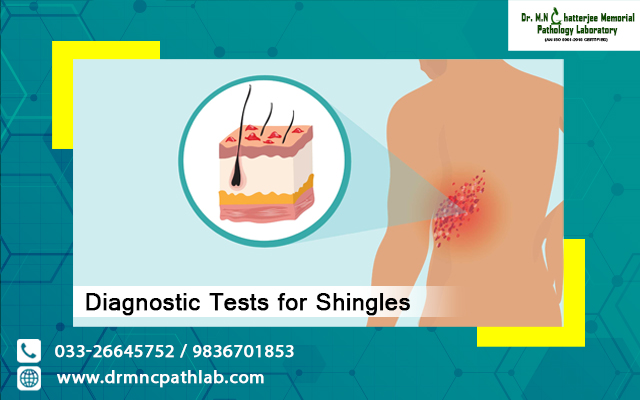There can be a painful rash on your body if you have shingles (herpes zoster). There can be shingles anywhere on your body. The varicella-zoster virus is the main cause of shingles. This same virus causes chickenpox. If you had chickenpox, the virus often remains inactive in the nerve tissue near your spinal cord and brain after the attack of chickenpox is over. The virus may reactivate after many years as shingles. If there is a rash on your body, the doctor can make an accurate clinical diagnosis by examining the signs and symptoms of shingles. There may be difficulty in diagnosing shingles if there is no rash on the body. It may be confused with some other conditions. The doctor suggests some diagnostic tests in such cases to confirm the presence of shingles. A diagnostic centre in Uttarpara has expert technicians to carry out these tests.
Polymerase chain reaction (PCR)
An important test for the confirmation of cases of zoster sine herpete, a pain like herpes zoster, is the PCR test. This test is helpful in the rapid and sensitive detection of the VZV DNA. When the disease is in an acute condition, it is possible to detect viral DNA in your saliva. In cases of disseminated disease, testing of biopsy samples is useful.
Antibody
Your immune system makes proteins in order to fight the varicella-zoster virus when you are exposed to it. By examining a sample of your blood, the pathologist can find these proteins. They are also called antibodies. Your arm is the place from where the pathologist takes the sample of blood.
Viral detection
The doctor can confirm the presence of the varicella-zoster virus by carrying out this test. The collection of samples can be done from the blisters on your skin. You will get the result from a pathology lab in Hooghly within a few days. The doctor can tell whether you have shingles from your symptoms and the test results. This will be followed by the proper treatment, which will give you relief from this condition.
Other tests
As there is limited sensitivity, the doctor does not recommend direct fluorescent antibody (DFA) and tzanck smear. The turnaround time of these methods is rapid but in comparison to PCR, DFA is substantially less sensitive. For VZV, tzanck is not specific. For the laboratory confirmation of herpes zoster, there is limited use of serologic methods. When there is the absence of suitable specimens for PCR testing, these tests are in use. There may be a mount in transient IgM response in patients with herpes zoster and it is often expected that they would mount a memory IgG response. It would indicate primary VZV infection, re-infection or re-activation, if the IgM ELISA result is positive. With the help of VZV IgG avidity testing, the doctor can distinguish a primary infection from reactivation or reinfection.






